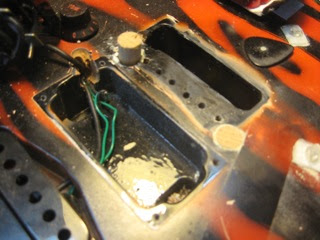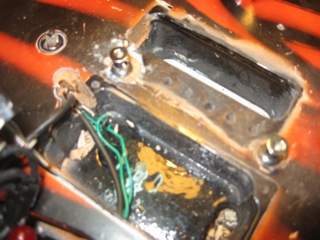Not a Floyd Rose Stu but I found similar substrate issues with a Maton Flamingo when I rebuilt it for a guy prior to last Xmas.
The body wood of these guitars is very soft and 'really' light. It is very much like and probably is in fact, Paulwania, a tropical species logged in QLD among other places and it has properties similar to Balsa. As soft as it is this worked OK because 'originally', these guitars had been fitted with a cheap tin plate knock off of a Bigsby tremolo and the footprint and 5 fixing screws of this hardware spread the load so that it held up well under string tension.
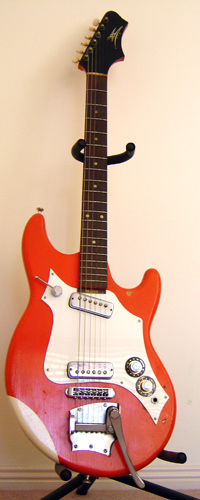
- Double cutaway original orange.jpg (44.82 KiB) Viewed 16761 times
The problems begin when the tin plate trem finally wears out or begins to rust and someone decides to convert to a tune-o-matic bridge with stop-tail..The small patch of hot pink you can see in the next image was the original colour for this particular guitar BTW. At some stage the it had been refinished in SG cherry red and the original hardware was refitted. The smoother dark areas around the post holes are in fact bondo that was used by who ever had stripped the guitar to bare wood and then refinished it in purple estapole..

You see the string spacings of the TOM bridge had been too wide for the very narrow fretboard of Maton Flamingo so in order to narrow the spacing and 'make' the bridge fit their solution had been to set the bridge and tail askew....so much for intonation.

The reason it all looks particularly ugly is that a second application of bondo had then been applied in an attempt to repair the post shift caused by the soft wood crushing under load which would have occurred shortly after the guitar had been strung up. This second application of bondo was probably done with the post still installed and caused major problems with the electrics because the bridge post earth wire was no longer in contact and it became buried in bog

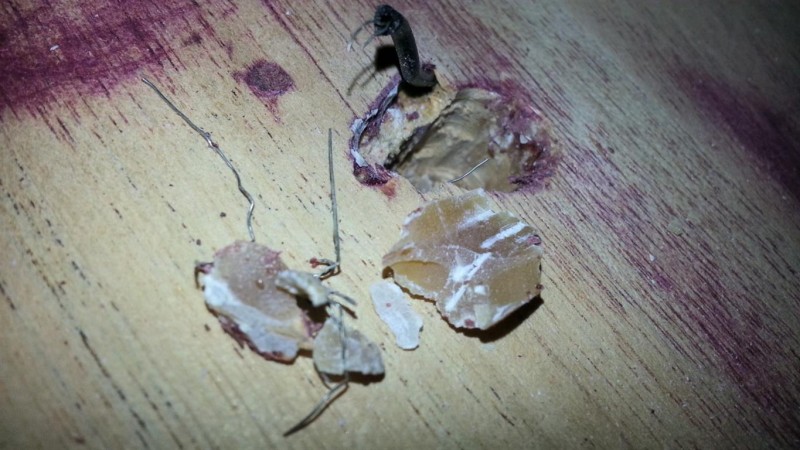
I needed to fit a Bigsby as part of the rebuild so my solution had been to use the curved back of the Bigsby, and the back edge of the bridge pickup rout, to form an elongated "D" shaped plug and replace all of the damaged wood in one hit. Doing this placed both tight corners of the plug under the pickgaurd and meant the only areas where any tell tail epoxy sink back could reveal itself if it occurred after the guitar was sprayed would run parallel with the grain either side of the Bigsby and therefore not be overly be noticeable.
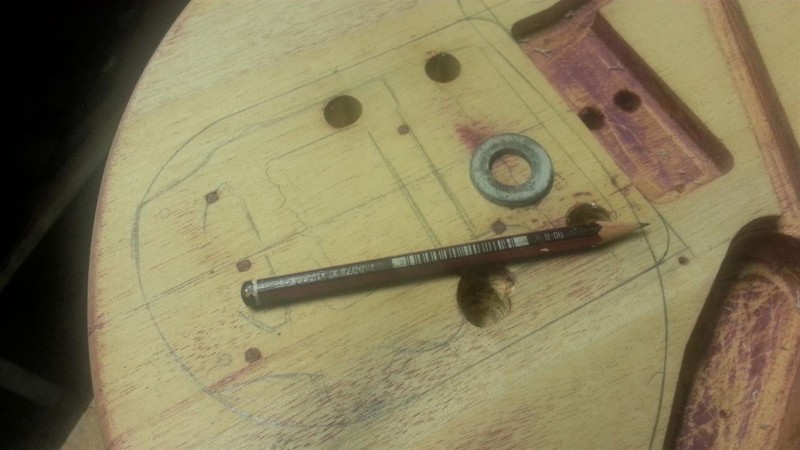
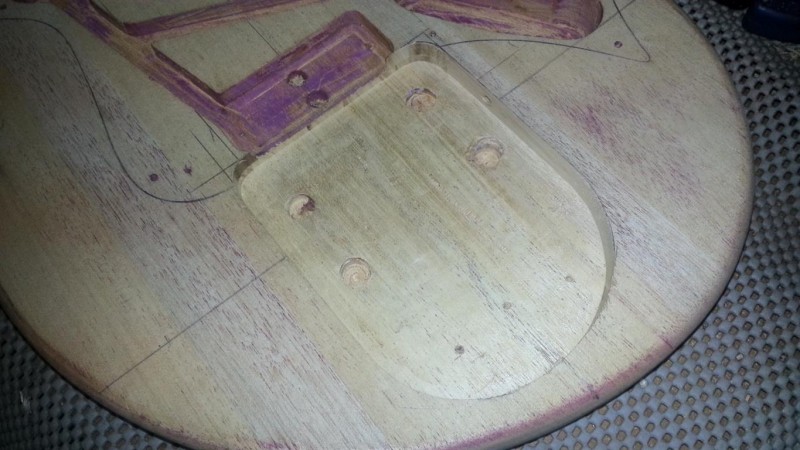
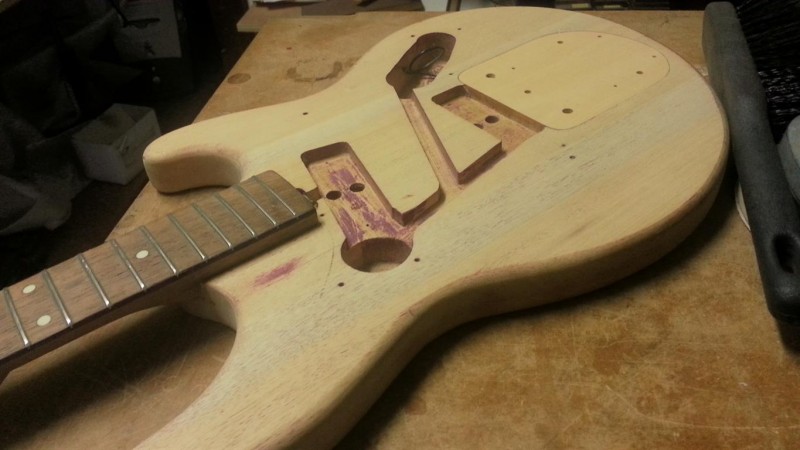
This may all be over-kill for your problem Stu but I thought I would show this stuff any how as it may offer you another possible solution on a smaller scale. As a first stop on your the guitar you have at hand perhaps I would try the dowel solution but after drilling and before fitting them, I would apply a very thin epoxy to the fresh bass wood to firm it up. I don't recall what the product is called but by thin epoxy I am referring to a product I used many years ago to re-secure dry rotted plywood in the transom of a power boat. The product is water like and soaks 'in' to the wood filling the cells making it quite strong. Once applied you could re-drill and fit your dowels. If the epoxy sounds too much trouble, I would at least do the same with thin CA or the same thing may happen as the hardwood dowels crush the basswood to tilt forward again. EDIT: Must agree with Steve that cutting your own plug is a better option than a dowel but I would still secure the basswood as described.
Cheers
Kim

